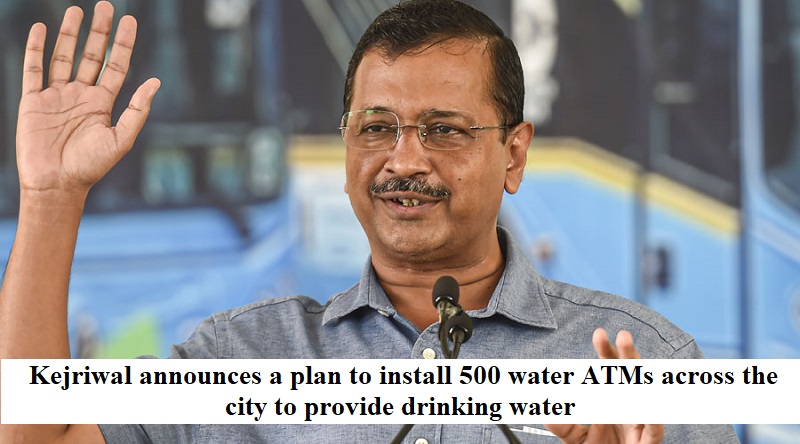
Arvind Kejriwal, the Chief Minister of India’s national capital, has unveiled a plan to install 500 water ATMs across the city. These ATMs will provide drinking water treated using the Reverse Osmosis (RO) process to residents living in slums and densely populated areas.
During an inspection of an RO plant in Delhi’s Mayapuri, Kejriwal announced that four water ATMs have already been installed, and an additional 500 are planned for the first phase of the initiative.
Each individual will receive a card that grants them access to draw 20 litres of purified water per day from these ATMs. The strategic placement of these water ATMs near slums and other challenging areas will ensure safe water access where laying pipelines is difficult. Water from tube wells will be treated at the RO plants before being distributed through the water ATMs.
The main objective of this initiative is to provide economically disadvantaged individuals with access to safe drinking water. Kejriwal explained to reporters that the card operates like a water ATM, enabling each person to obtain 20 litres of purified water in areas with insufficient drinking water facilities. He emphasized that this will ensure that even the less privileged can drink the same quality of water as those who have RO systems at home.
The water ATMs will function like water banks, catering to the needs of people living in areas with inadequate drinking water facilities.
Earlier this year, the Delhi Jal Board (DJB) received directives from the Chief Minister to address the issue of contaminated water in various parts of the city. The plan involves setting up RO-based purification plants in 20 slum clusters across Delhi to provide clean drinking water.
Kejriwal stressed that the priority is to completely eliminate the problem of contaminated water supply in the city. He instructed senior officials to promptly identify areas with contaminated water and submit detailed plans for permanent solutions and their implementation.

Post Your Comments